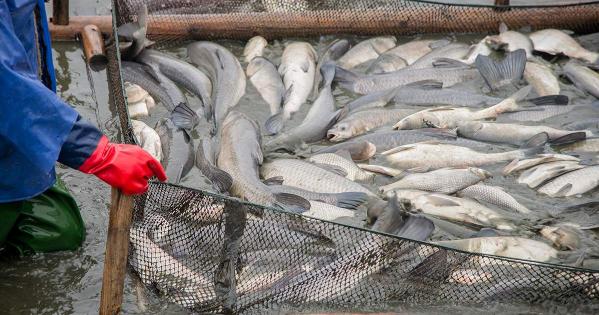New Research Uncovers Impacts of COVID-19 on Seafood Supply and Demand

Jessica Gephart, assistant professor of environmental science at American University, has been a part of different teams of scientists uncovering the impacts of COVID-19 on the seafood industry and consumption. The impacts of COVID-19 pandemic on food systems, in the U.S. and around the world, have been vast. For the past year, Gephart has made contributions to several research papers on the shocks to seafood supply and demand.
In a new paper published and led by researchers in Johns Hopkins Center for a Livable Future that Gephart contributed to, researchers analyzed disruptions across the global sector and effects on low- to middle-income countries. They found that some areas of the sector fared better than others when it came to buffering the impacts from the pandemic. According to the research findings, some companies, countries, and products in the large-scale commercial sector showed initial signs of greater resilience, for example, by redistributing products around the globe to avoid COVID-19 hot-spots. The small-scale sector had their own sets of responses, such as mobilizing fishworker networks, documenting impacts, advocating for support, and shifting to domestic and direct markets.
While seafood often doesn’t get as much attention as agriculture, on average, individual Americans consume nearly 19 pounds of seafood a year. It’s an important industry for many American states such as Maine, Alaska, Massachusetts and Louisiana. Globally, seafood is a critical source of nutrients for nearly 1 billion people and supports the livelihoods of more than 120 million people.
“Historically, we know much more about shocks on agriculture, and less so about seafood,” Gephart explains. “It has been important to analyze COVID-19 as a shock to seafood systems across the globe, so that we can learn how to build resilience in the sector to future shocks.”
The new paper also reveals the interconnected nature of the global seafood trade. For example, India’s nationwide lockdown forced the closure of hatcheries, feed mills and processing plants. Sharp drop in demand from the U.S. and Europe reduced international exports of frozen shrimp, which account for 70 percent of India seafood exports.
With the new paper and others Gephart has contributed to, researchers have attempted to analyze available data from 2020, rather than wait for data that can sometimes take months or years to inform science and policy. A data scientist, Gephart helped to analyze published data across news, social media outlets, governments and development partners, allowing for a picture in real time of the disruptions to multiple stages of supply chains and the impact of shocks on markets and trade, aquaculture, consumers, supply chains and workers.
Analyzing Data in Real Time
In a paper focused on the U.S. industry, researchers synthesized sources from across the seafood supply chain, including unconventional real‐time data sets, to show the relative initial responses and indicators of recovery. They synthesized news articles from January to September 2020 that reported effects of COVID‐19 on the U.S. seafood sector, including processor closures, shortened fishing seasons and loss of revenue.
They found effects on all levels of trade, from catches, which declined by 40 percent, with imports down 37 percent and exports down 43 percent compared with the previous year. Frozen seafood products were initially less affected, corresponding to shifts in consumer demand. Google search trends and seafood market foot traffic data suggest consumer demand for seafood from restaurants dropped by nearly 70 percent during lockdowns, with recovery varying by state. However, these declines were partially offset by an increase in delivery and takeout service, according to Internet search data.
“COVID-19 has reshaped global food systems, with shifting impacts throughout the entire supply chain over the past year,” Gephart said. “Tracking these impacts with all available data is critical for targeting relief funds and rebuilding the sector to be more resilient in the future.”
